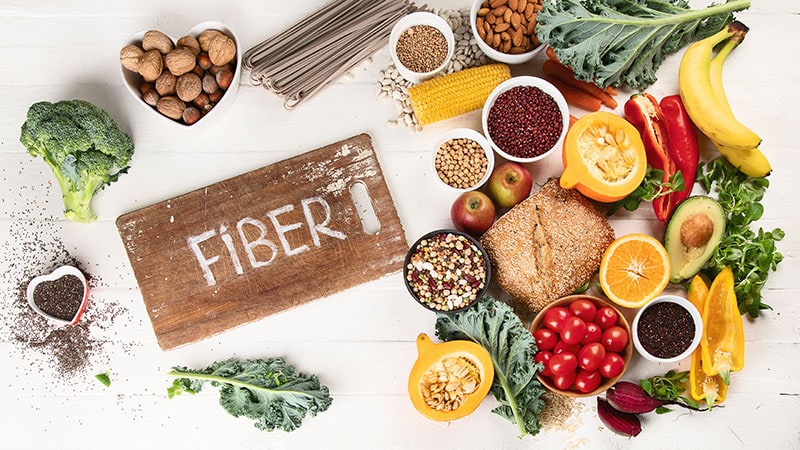Fitness
High-Fiber Foods Release Appetite-Suppressing Gut Hormone

TOPLINE:
A high-fiber diet affects small intestine metabolism, spurring release of the appetite-suppressing gut hormone peptide tyrosine tyrosine (PYY) more than a low-fiber diet, and it does so regardless of the food’s structure, new research revealed.
METHODOLOGY:
- Researchers investigated how low- and high-fiber diets affect the release of the gut hormones PYY and glucagon-like peptide 1 (GLP-1).
- They randomly assigned 10 healthy volunteers to 4 days on one of three diets: High-fiber intact foods, such as peas and carrots; high-fiber foods with disrupted structures (same high-fiber foods, but mashed or blended); or low-fiber processed foods. Volunteers then participated in the remaining two diets in a randomized order, with a washout period of at least a week in which they reverted to their normal diet between each session.
- The diets were energy- and macronutrient-matched, but only the two high-fiber diets were fiber-matched at 46.3-46.7 grams daily, whereas the low-fiber diet contained 12.6 grams of daily fiber.
- The researchers used nasoenteric tubes to sample chyme from the participants’ distal ileum lumina in a morning fasted state and every 60 minutes for 480 minutes postprandially on days 3 and 4 and confirmed their findings using ileal organoids. Participants reported their postprandial hunger using a visual analog scale.
TAKEAWAY:
- Both high-fiber diets increased PYY release — but not GLP-1 release — compared with a low-fiber diet during the 0-240-minute postprandial period, when the food was mainly in the small intestine.
- At 120 minutes, both high-fiber diets increased PYY compared with the low-fiber diet, a finding that counteracted the researchers’ hypothesis that intact food structures would stimulate PYY to a larger extent than disrupted food structures. Additionally, participants reported less hunger at 120 minutes with the high-fiber diets compared with the low-fiber diet.
- High-fiber diets also increased ileal stachyose, and the disrupted high-fiber diet increased certain ileal amino acids.
- Treating the ileal organoids with ileal fluids or an amino acid and stachyose mixture stimulated PYY expression similarly to blood PYY expression, confirming the role of ileal metabolites in the release of PYY.
IN PRACTICE:
“High-fiber diets, regardless of their food structure, increased PYY release through alterations in the ileal metabolic profile,” the authors wrote. “Ileal molecules, which are shaped by dietary intake, were shown to play a role in PYY release, which could be used to design diets to promote satiety.”
SOURCE:
The study, led by Aygul Dagbasi, PhD, Imperial College London, London, England, was published online in Science Translational Medicine.
LIMITATIONS:
The study had several limitations, including the small number of participants. The crossover design limited the influence of covariates on the study outcomes. Gastric emptying and gut transit rates differed widely; therefore, food that may have reached and affected the ileum prior to the first postprandial sample point at 60 minutes was not captured. The authors had access to a limited number of organoids, which restricted the number of experiments they could do. Although organoids are useful tools in vitro, they have limitations, the researchers noted.
DISCLOSURES:
The research was funded by the Biotechnology and Biological Sciences Research Council (BBSRC), Nestle Research, and Sosei Heptares. The Section for Nutrition at Imperial College London is funded by grants from the UK Medical Research Council, BBSRC, National Institute for Health and Care Research, and UKRI Innovate UK and is supported by the National Institute for Health and Care Research Imperial Biomedical Research Centre Funding Scheme. The study was funded by UKRI BBSRC to the principal investigator. The lipid analysis was funded by a British Nutrition Foundation Drummond Early Career Scientist Award. The food microscopy studies were supported by the BBSRC Food Innovation and Health Institute Strategic Programme. Three coauthors disclose that they are directors of Melico Sciences, and several coauthors have relationships with industry outside of the submitted work.










